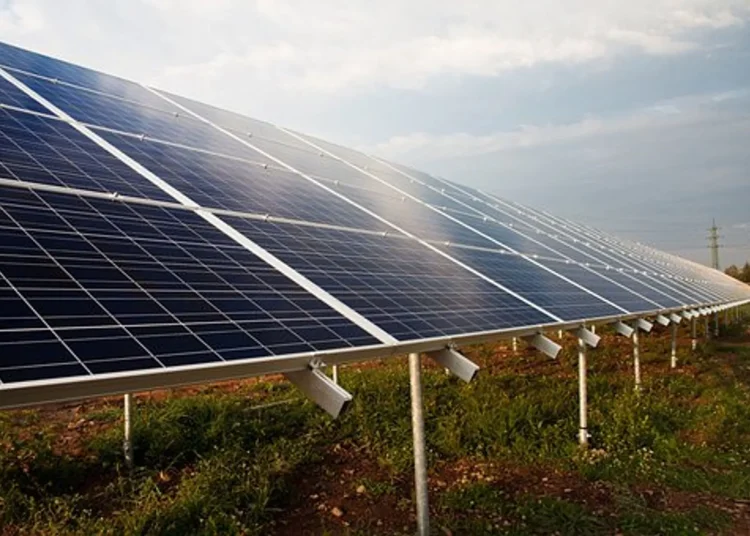As renewable energy continues to gain momentum, solar power has become an increasingly accessible and reliable source of electricity for homeowners, businesses, and outdoor enthusiasts. One of the key options available for those looking to harness the power of the sun is the 300-watt solar panel. These panels offer an excellent balance between power output, size, and cost, making them ideal for various applications.
In this article, we will explore the uses, importance, and reasons why a 300-watt solar panel is an effective choice for both residential and mobile energy needs.
What is a 300-Watt Solar Panel?
A 300-watt solar panel is a photovoltaic (PV) panel that generates up to 300 watts of electricity under optimal sunlight conditions. Solar panels convert sunlight into direct current (DC) electricity through the photovoltaic effect, using silicon-based cells that react when exposed to sunlight. The electricity generated can then be stored in batteries or converted into alternating current (AC) electricity through an inverter, making it usable for powering various devices and systems.
A 300-watt solar panel strikes a good balance between power production and size, making it a practical choice for those looking to generate substantial electricity without requiring too much space. Whether you’re powering a home, an RV, or even an off-grid cabin, a 300-watt panel can supply a significant amount of energy with minimal environmental impact.
Why Choose a 300-Watt Solar Panel?
There are several reasons why a 300-watt solar panel might be the right choice for your energy needs. Below are some key benefits of choosing this size of solar panel:
- Ideal Power Output: A 300-watt solar panel provides enough electricity to power a range of devices and appliances, making it a versatile option for different applications. For example, it can charge batteries, run small appliances, and support essential systems in homes, RVs, or remote locations. It is particularly beneficial for those who want to generate a moderate amount of power without needing an excessively large solar array.
- Cost-Effective Solution: The affordability of 300-watt solar panels makes them an attractive choice for both residential and mobile setups. While they offer a higher power output than smaller panels, they are still cost-effective compared to larger, more powerful systems. This balance between power and price makes them a popular option for those seeking a practical energy solution.
- Energy Efficiency: Advances in solar technology have made solar panels more efficient than ever, meaning that modern 300-watt panels can generate more electricity from the same amount of sunlight. Whether you live in an area with abundant sunshine or a region with variable weather, a 300-watt solar panel can still produce enough power to meet your energy needs.
- Environmental Impact: Solar panels are one of the most environmentally friendly energy solutions available. By choosing a 300-watt solar panel, you are reducing your reliance on fossil fuels and helping to lower greenhouse gas emissions. Solar energy is a clean, renewable resource that produces no harmful emissions, making it a responsible choice for anyone looking to reduce their carbon footprint.
- Versatility: The 300-watt solar panel is versatile enough to be used in a wide variety of settings. Whether you want to power your home, charge your RV’s battery bank, or provide electricity to an off-grid cabin, this panel can be adapted to meet your specific energy requirements.
Practical Uses of a 300-Watt Solar Panel
Thanks to their moderate size and power output, 300-watt solar panels are suitable for a wide range of applications. Here are some common uses for this type of panel:
- Residential Solar Systems: For homeowners looking to reduce their electricity bills or transition to renewable energy, a 300-watt solar panel is an excellent choice. While a single panel may not be enough to power an entire home, combining multiple 300-watt panels in a solar array can significantly reduce your reliance on the grid. This is especially true for those with energy-efficient homes or smaller power needs, as a few panels can generate enough electricity to cover daily energy consumption.
- RV and Campervan Solar Systems: RV owners often use 300-watt solar panels to power their off-grid adventures. These panels can be mounted on the roof of the vehicle to charge batteries, run appliances like refrigerators or fans, and power lighting systems. Because RVs typically have limited roof space, the compact size of a 300-watt panel makes it a great option for generating a substantial amount of electricity without taking up too much space.
- Off-Grid Cabins and Tiny Homes: For those living in off-grid locations or tiny homes, a 300-watt solar panel provides a reliable source of electricity for essential systems such as lighting, heating, and appliances. When paired with a battery storage system, these panels can supply enough power to maintain a comfortable lifestyle without the need for traditional electricity sources.
- Emergency Backup Power: A 300-watt solar panel can also be used as part of an emergency backup power system. In the event of a power outage, these panels can provide critical electricity to run essential appliances, charge devices, or power medical equipment. Having solar power available in an emergency ensures that you are never without access to electricity when you need it most.
- Portable Power Solutions: Thanks to their relatively lightweight and compact design, 300-watt solar panels are also suitable for portable power solutions. Whether you’re camping, working remotely, or simply spending time outdoors, a portable 300-watt panel can generate enough electricity to charge devices, run small appliances, or keep your electronics powered. This portability makes them an excellent choice for those who need access to clean energy while on the go.
How Much Power Does a 300-Watt Solar Panel Generate?
A 300-watt solar panel can generate up to 300 watts of electricity per hour under ideal sunlight conditions. In a typical day with 5 to 6 hours of direct sunlight, this means the panel could produce between 1.5 and 1.8 kilowatt-hours (kWh) of electricity per day. Over the course of a month, this could add up to 45-54 kWh, depending on your location and the amount of sunlight the panels receive.
To put this in perspective, a single 300-watt panel could power:
- LED lighting (10W) for 30-40 hours
- A refrigerator (150W) for 8-10 hours
- A laptop (50W) for 24-30 hours
- A small fan (75W) for 15-20 hours
These figures illustrate the versatility and practical power output of a 300-watt solar panel, making it suitable for both everyday energy needs and occasional power requirements.
Key Considerations When Choosing a 300-Watt Solar Panel
When selecting a 300-watt solar panel, there are a few key factors to consider to ensure it meets your specific needs:
- Installation Area: Make sure you have enough space to install the panels, whether on your roof or in a ground-mounted system. The size of the panel and the available installation area will determine how many panels you can install to meet your energy requirements.
- Battery Storage: If you plan to use your solar panels in an off-grid or backup power scenario, it’s important to pair them with a reliable battery storage system. This will allow you to store excess energy generated during the day for use at night or during cloudy weather.
- Efficiency: Check the efficiency rating of the panel, as this will determine how much sunlight is converted into usable electricity. Higher efficiency panels may cost more upfront but will generate more power over time, making them a better long-term investment.
Conclusion
A 300-watt solar panel is a versatile, efficient, and environmentally friendly solution for generating electricity in a wide range of applications. Whether you’re looking to reduce your electricity bills at home, power your RV or campervan during off-grid adventures, or provide backup power in emergencies, a 300-watt panel can meet your energy needs with ease.
By investing in 300-watt solar panels, you’re not only choosing a cleaner and more sustainable source of energy but also ensuring long-term savings and energy independence. With the right solar setup, you can enjoy reliable power, lower costs, and a reduced environmental footprint, all while benefiting from the versatility and practicality of solar technology.















